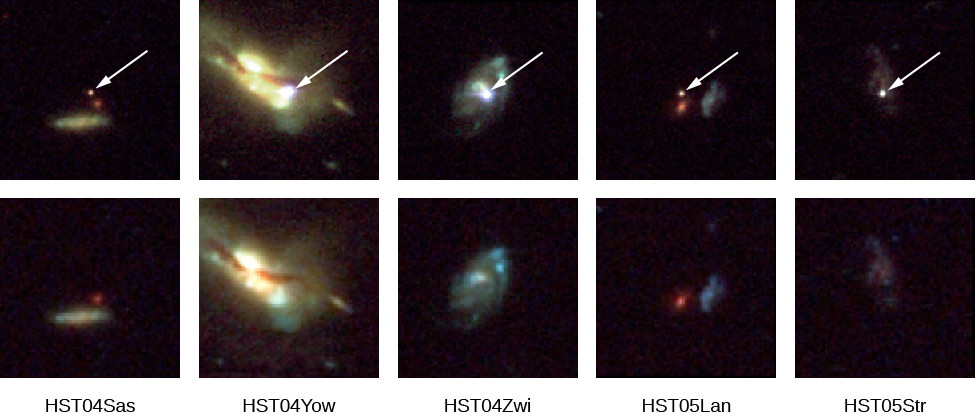| << Chapter < Page | Chapter >> Page > |
The resulting explosion is called a supernova ( [link] ). When these explosions happen close by, they can be among the most spectacular celestial events, as we will discuss in the next section. (Actually, there are at least two different types of supernova explosions: the kind we have been describing, which is the collapse of a massive star, is called, for historical reasons, a type II supernova . We will describe how the types differ later in this chapter).

[link] summarizes the discussion so far about what happens to stars and substellar objects of different initial masses at the ends of their lives. Like so much of our scientific understanding, this list represents a progress report: it is the best we can do with our present models and observations. The mass limits corresponding to various outcomes may change somewhat as models are improved. There is much we do not yet understand about the details of what happens when stars die.
| The Ultimate Fate of Stars and Substellar Objects with Different Masses | |
|---|---|
| Initial Mass (Mass of Sun = 1) Stars in the mass ranges 0.25–8 and 8–10 may later produce a type of supernova different from the one we have discussed so far. These are discussed in The Evolution of Binary Star Systems . | Final State at the End of Its Life |
| <0.01 | Planet |
| 0.01 to 0.08 | Brown dwarf |
| 0.08 to 0.25 | White dwarf made mostly of helium |
| 0.25 to 8 | White dwarf made mostly of carbon and oxygen |
| 8 to 10 | White dwarf made of oxygen, neon, and magnesium |
| 10 to 40 | Supernova explosion that leaves a neutron star |
| >40 | Supernova explosion that leaves a black hole |
After the supernova explosion, the life of a massive star comes to an end. But the death of each massive star is an important event in the history of its galaxy. The elements built up by fusion during the star’s life are now “recycled” into space by the explosion, making them available to enrich the gas and dust that form new stars and planets. Because these heavy elements ejected by supernovae are critical for the formation of planets and the origin of life, it’s fair to say that without mass loss from supernovae and planetary nebulae, neither the authors nor the readers of this book would exist.
But the supernova explosion has one more creative contribution to make, one we alluded to in Stars from Adolescence to Old Age when we asked where the atoms in your jewelry came from. The supernova explosion produces a flood of energetic neutrons that barrel through the expanding material. These neutrons can be absorbed by iron and other nuclei where they can turn into protons. Thus, they build up elements that are more massive than iron, including such terrestrial favorites as gold and silver. This is the only place we know where such heavier atoms as lead or uranium can be made. Next time you wear some gold jewelry (or give some to your sweetheart), bear in mind that those gold atoms were once part of an exploding star!

Notification Switch
Would you like to follow the 'Astronomy' conversation and receive update notifications?